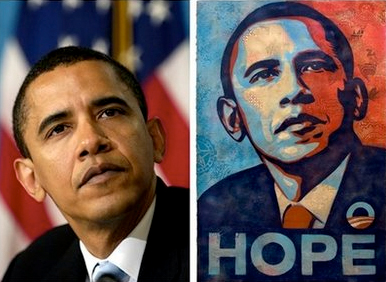
Appropriation: Is it a form of art? A lack of imagination? Or just plain theft?
Appropriation
Is it a form of art? A lack of imagination? Or just plain theft?
According to the Cambridge dictionary, the word appropriation is described as: “When you take something for your own use, usually without permission”
““When you take something for your own use, usually without permission”
So with this definition in mind, it is natural to think of this topic as a ‘hot button” for many, but particularly for professional photographers, in the commercial as well as the fine art realms. As an active member of the American Society of Media Photographers for many years, I can attest to the fact that this singular topic is akin to opening the pen of domestic animals to a pack of wolves, with the resulting carnage and even occasional self-cannibalism in the process.
First, we must look at the established parameters for all creative materials. Are they copyrighted? Has the copyright term expired? Are they part of the public domain? These factors would initially establish the potential legal use of these materials, the conditions for the usage and the ultimate outcome of the subsequent work created from the materials. These questions are more of a legal approach to the topic, but nevertheless an important starting point. It is crucial to remember that the courts do not make judgments on the artistic merits of any works of art, but rather look at their specific status within the current copyright laws. Having said that, there is a current flurry of activity proposing changes to the copyright laws (not in favor of the creators), as well as a number of class action lawsuits against Google and Getty Images. So far, the courts have often ruled against the appropriator, much to the chagrin of the art elite who proclaims appropriation to be integral posit to post modernist art, freedom and all kinds of elitist dribble. Sadly, the copyright laws are being eroded and more often than not the courts are now swaying in favor of the appropriation culprits.
 Photograph by Mannie Garcia (AP) / Artwork by Shepard Fairey
Photograph by Mannie Garcia (AP) / Artwork by Shepard Fairey
Secondly, the vast proliferation of images in a globally connected world and social medias in all forms will invariably lead to the proliferation of appropriation, often under the incorrect assumption that if it is on the internet it is free to use and fair game. Google is the biggest culprit, gathering millions of images for the purpose of gathering data on the viewer and/or user of said images. Interestingly, Shepard Fairey found the image of Obama on Google. Should you care to check the terms and conditions for most social media platforms, you may be surprised at the dangers of putting your images on these media! Technology has changed the entire premise of copyright laws, eroding these in the process, yet the world moves forward and so we must evolve as fighting Google, Getty Images or the social media platforms is simply futile. The genie, or monster, is out of the bottle.
““Is the person or artist using these as a precursor and inspiration for their own output?”
Last, and perhaps more importantly in my personal opinion, is the intent of the person who appropriates the materials. Is the person or artist using these as a precursor and inspiration for their own output? Are they replicating or duplicating the materials for personal use or commercial gain from the public or private enterprises? Are they using them to produce a new generation of art, one that takes its roots from the originals but departs in a newer creative form? Are the materials used for academic purposes and following the established rules of that usage? So, at the root of this topic are the ethics within the intent of the person or persons who appropriate the art (in its many forms). Appropriation is not new, gaining momentum with the Cubist collages of Picasso and Braque, the readymade urinal presented by Marcel Duchamp in 1915, the 1950’s works of Jasper Johns and Robert Rauschenberg, Pop art and the emergence of post modernism with notable users of appropriation such as Jeff Koons and Sherry Levine. The polemics of what constitutes art cannot be presented in such a limited blog format, suffice to say that appropriation art is a complex topic that can be debated by the art elite in between ritzy gallery openings, museum gatherings and the columns of well read publications that do not address farming or livestock in any fashion.
 Photograph by Art Rogers, 1980 / Sculpture by Jeff Koons, 1998
Photograph by Art Rogers, 1980 / Sculpture by Jeff Koons, 1998  Photograph by Walker Evans, 1936 / Re-photographed by Sherry Levine, 1981
Photograph by Walker Evans, 1936 / Re-photographed by Sherry Levine, 1981
Ultimately, and in response to the title of this blog, appropriation can be a form of art, a lack of imagination, or just simply theft. As any good lawyer would say: It depends. In this case I would affirm that it depends on the intentions and ethics of the appropriator, or some ubiquitous discussions on what constitutes art and its ownership.

Recent Comments